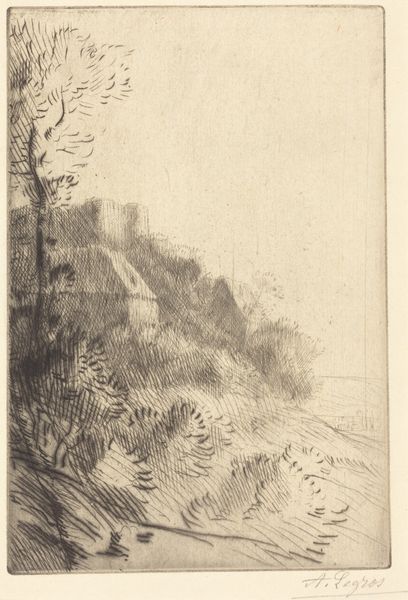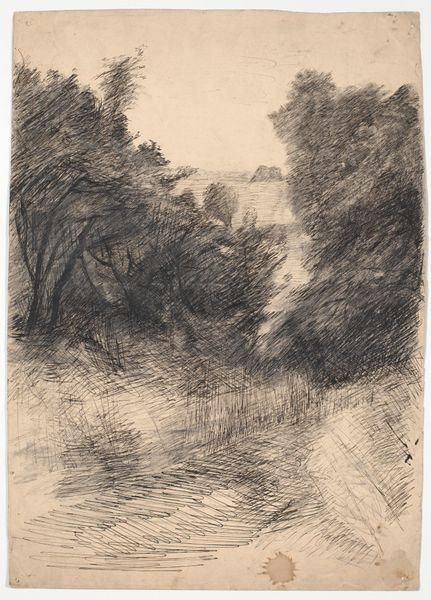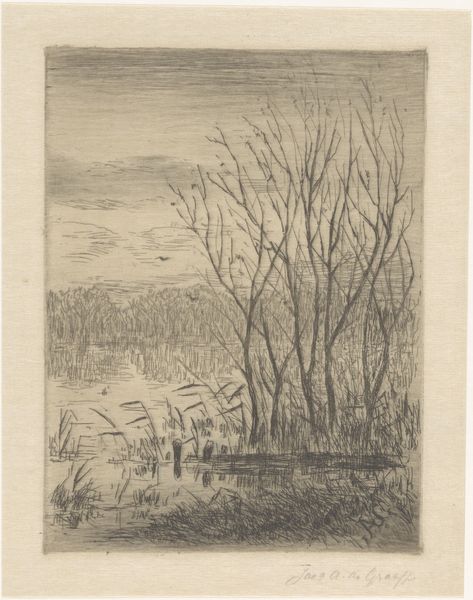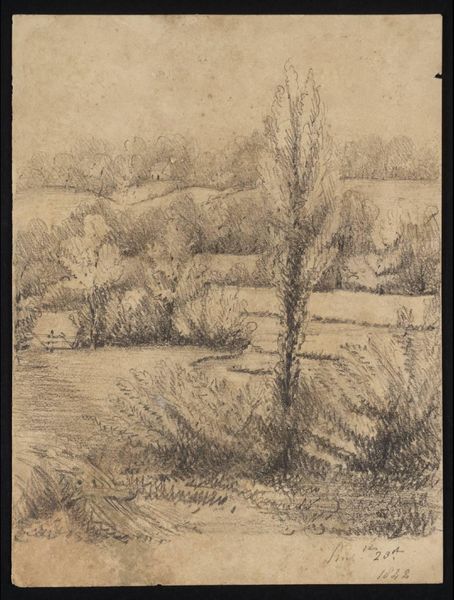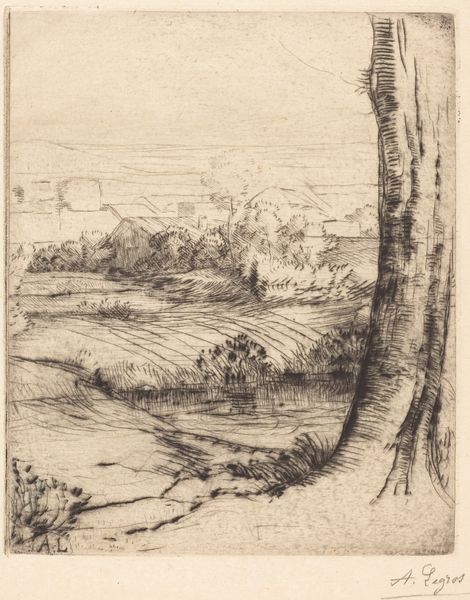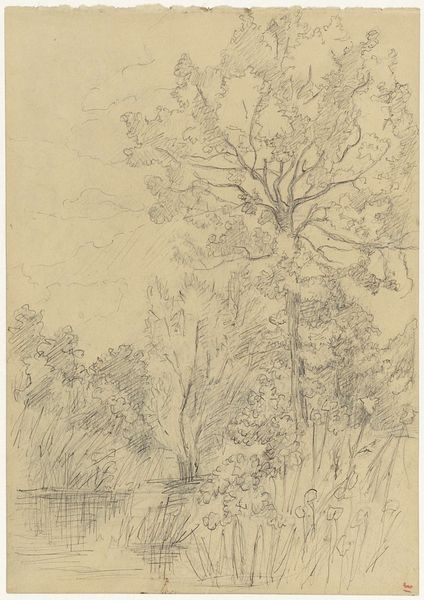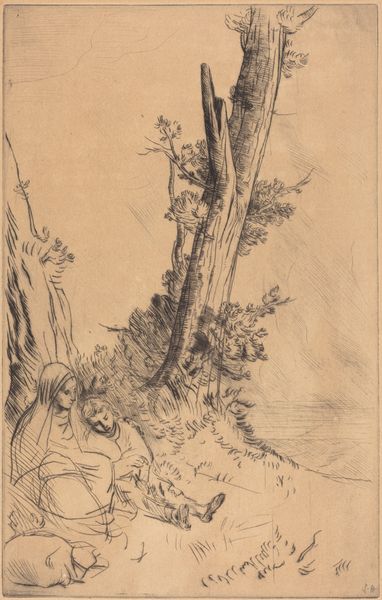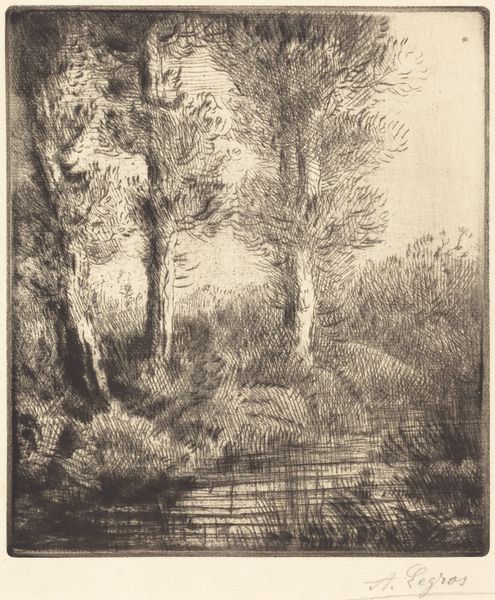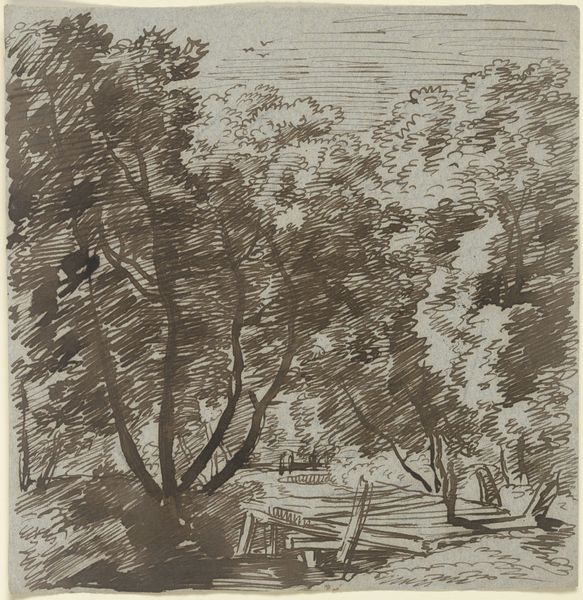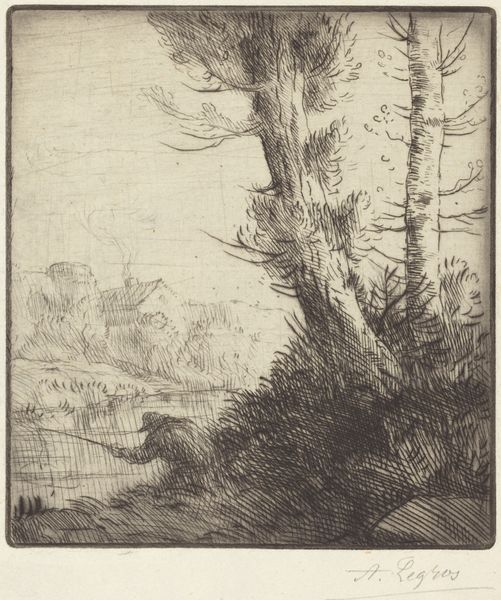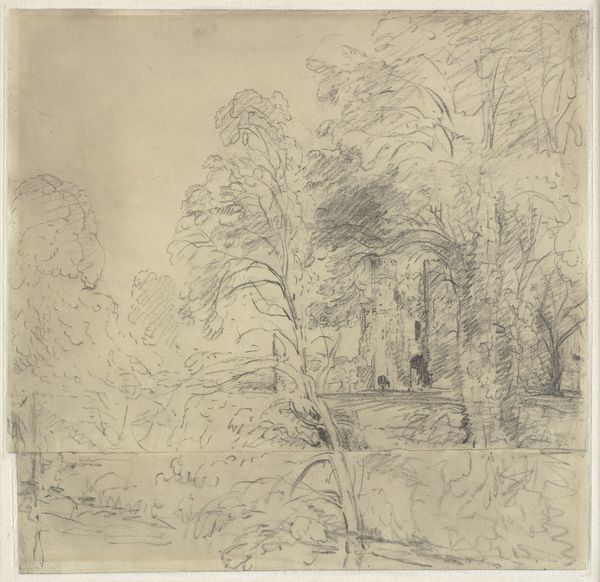
drawing, print, etching
#
drawing
# print
#
etching
#
landscape
#
etching
#
realism
Copyright: National Gallery of Art: CC0 1.0
Curator: Before us we have "Old Village" or "Ville Vieille," an etching by Alphonse Legros. The soft, almost ethereal quality gives it an intensely nostalgic feel. Editor: It’s mostly just a feeling of tangled lines, a density in the foreground that blurs into almost nothing at the horizon. All those marks representing the tall grass—what kind of tools were used? Curator: Legros was a master printmaker. With etching, he would have used acid to bite into the metal plate, creating lines that would then hold the ink. The subtle variations in tone suggest considerable control of the etching process. He would’ve manipulated the timing to get various shades. Editor: Thinking about the actual production, you can almost feel the labor involved. The biting of the metal, the wiping of the plate... It's not a single gesture but a repetitive, painstaking process. The resulting image belies that reality. Curator: Perhaps, but within the tradition of the pastoral landscape, isn't there often an attempt to smooth over the hard work of existence, replacing labor with idealized beauty? It's like a remembered place, a softening of the sharp edges of life through memory. We perceive here, through a cluster of lines, how things once were in our old village. Editor: But "old village" speaks to how the past itself is a construct. Those etching marks don't objectively render reality; they translate the experience, the labor, of attempting to capture something fleeting, almost lost. There is some critique to consumption hidden in this visual experience. Curator: Yet it also hints at the cyclical nature of life and remembrance. The village fades, is captured by the artist, becomes art, and we remember what it represents. And the process that's undertaken represents tradition as a means of visual cultural memory. Editor: That emphasis on the process does push back on the concept of fine art existing in a vacuum. We are prompted to contemplate production in our increasingly technological age. Curator: It makes me contemplate how Legros saw the scene before him and how it aligns with our memories of the past. Editor: I’m left contemplating how the creation and experience of an image intertwine with the social reality surrounding that image. A village rendered as lines—and the labour behind it all.
Comments
No comments
Be the first to comment and join the conversation on the ultimate creative platform.
